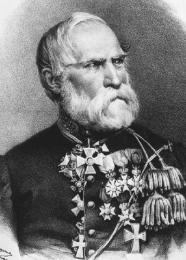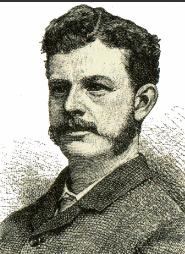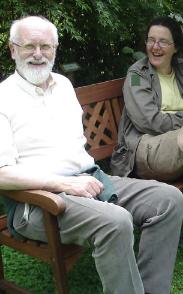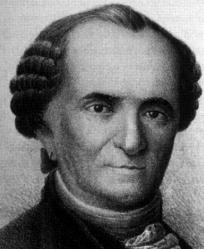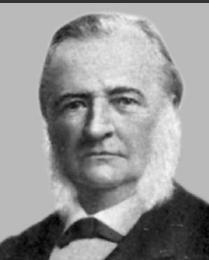 |
|
Links |
||||||||||||||||||||
Plant combinations |
||||||||||||||||||||
History of Hydrangea (Hortensia) |
||
The first Hydrangeas The oldest fossil finds were found in North America , namely in Alaska , Oregon and California , they were dated at 40 to 65 million years ago , more recent discoveries in China , Japan , Taiwan and the Philippines prove that the Hydrangea have been on this planet long before the arrival of men . Hydrangeas in Europe In China and Japan they already cultivated Hydrangea's many thousands of years ago , in North America the medicine men used the roots of H.arborescens as a means to drive out kidney stones and to combat bronchitis. The first Hydrangea arborescens ( North American species) was introduced in England around 1736 from Pennsylvania by Peter Collison. Grovonius gave the plant in 1739 in his work " Flora Virginica ' for the first time the name: Hydrangea . The still famous botanist Carolus Linnaeus , to whom we owe our current plant name system ( binomial nomenclature ) has mentioned already in 1753 the name Hydrangea arborescens . The name hortensia , in Belgium , the Netherlands and France still commonplace, was first used by Philibert Commerson , botanist and plant collector, who found some Hydrangeas in Chinese gardens ( 1767 ) and it took to France , he named the plants: Hortensia opuloides or even Hortensia hortensis . Hydrangeas from Japan Since 1639 it was forbidden for foreigners to travel around in Japan, the only contact was by the island of Dejima in Nagasaki Bay and it was here that Carl Peter Thunberg , a pupil of Linnaeus , settled in 1775 and succeeded to acquire five hydrangeas from the mainland, he later called these plants : Viburnum macrophylla ... Sir Joseph Banks brought in 1788 a Hydrangea from Japan with him and gave it to Kew Gardens , he called the plant: Hydrangea hortensis ... Doctor and botanist Philipp Franz von Siebold succeeded around 1823 in two trips to the Japanese mainland and toke numerous plants with him. Thanks to his good work in the eye clinic and the gratitude of the patients , he managed to acquire many new plant species ( Hydrangeas ... hostas , ) When he was expelled in 1829 , for allegedly spying for the Russians , and had to leave Japan, he brought with him various kinds , including H. Involucrata , H. anomala ssp . petiolaris ( climbing hydrangea ) , H. Hirta , H.paniculata ..... Partly due to independance war between Belgium and the Nederlands in 1830 , when he arrived in Antwerp harbour he had to leave behind, 260 plants, bulbs and tubers in the botanical garden of Ghent . Around this time ( 1830) the Hydrangea macrophylla got its present botanical name : Hydrangea macrophylla . Planthunters seek new varieties Around 1879 the famous English nursery Veitch , sent the plant hunter Charles Maries to China and Japan , he would find two hydrangeas and bring back , a Hydrangea with flat flowers (lacecap) he called H.macrophylla 'Mariesii' and a spherical type , he called Hydrangea macrophylla ' Rosea' . Around 1860 the Russian botanist Carl Johann Maximowicz was sent out by the Tsar of Russia to Japan to discover plants and he would eventually bring more than 400 plants to the gardens of St. Petersburg , later in 1867 he published his Revisio Hydrangearum Asiae Orientalis . Species such as Hydrangea. anomala , H.aspera and H. heteromalla were introduced during the 19th century in Europe, thanks to two enthusiastic botanists , namely Francis Buchanan Hamilton and Nathaniel Wallich . While nurseries from Asia , U.S. and Europe in the course of the twentieth century brought mainly numerous cultivars of Hydrangea macrophylla on the market , enthusiastic planthunters and botanists went out in nature discovering new species. From Belgium Robert and Jelena de Belder brought along lots of seeds of numerous expeditions , wich were brought to growth and later subsequently crossed. In France, Robert and Corinne Mallet devoted themselves with great enthusiasm , to the genus Hydrangea and after so many expeditions founded the Shamrock collection in Varengeville - sur-mer (Normandy) and released numerous interesting books and publications |
||
Nederlands
Hydrangea species
Hydrangea arborescens
Hydrangea aspera
Hydrangea heteromalla
Hydrangea hirta
Hydrangea integrifolia
Hydrangea involucrata
Hydrangea macrophylla (Mopheads)
Hydrangea macrophylla (lacecaps)
Hydrangea paniculata (Peegee hydrangea)
Hydrangea petiolaris (Climbing Hydrangea)
Hydrangea quercifolia (Oak Leaf Hydrangea)
Hydrangea sargentiana
Hydrangea serrata
Philipp Franz von Siebold (1796 - 1866)
Charles Maries (1851-1902), Famous planthunter.
Robert and Corinne Mallet
Philibert Commerson (1727-1773)
Carl Johann Maximovich (1827-1891)
Jelena en Robert De Belder
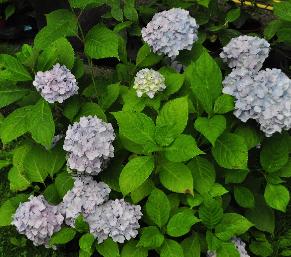

Hydrangea macrophylla 'Otaksa', plant brought back from the second voyage of Von Siebold, named after his Japanese girlfriend 'O taki San'
Hydrangea macrophylla ' Mariesii', brought back by Charles Maries in 1879.
